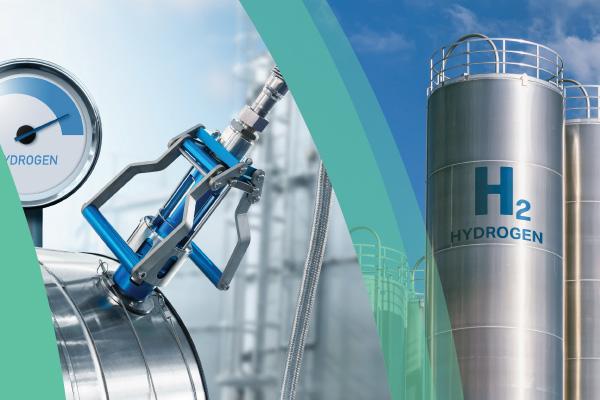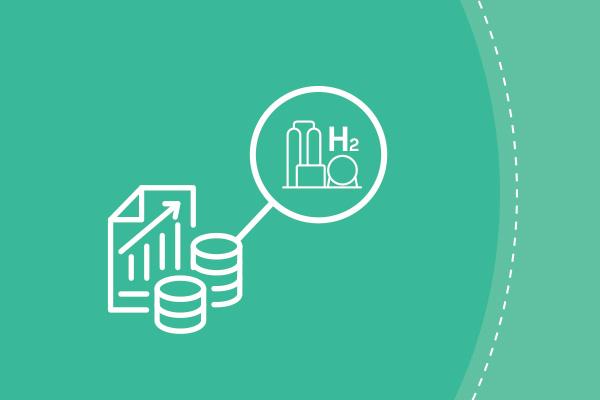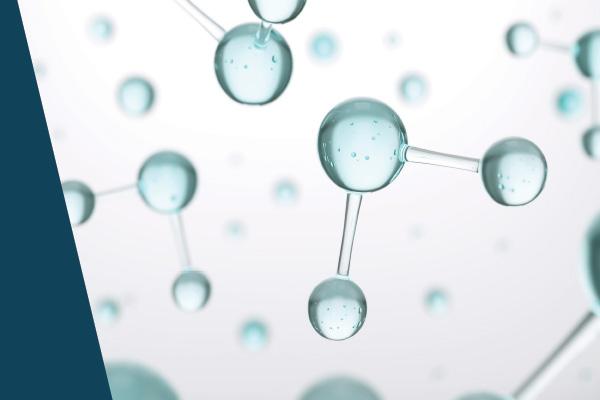In 2022, hydrogen accounted for less than 2% of Europe’s energy consumption and was primarily used to produce chemical products, such as plastics and fertilisers. 96% of this hydrogen was produced with natural gas, resulting in significant amounts of CO2 emissions.
The priority for the EU is to develop renewable hydrogen. The REPowerEU Strategy of 2022 set out the aim of producing 10 million tonnes and importing 10 million tonnes by 2030. By 2050, renewable hydrogen is to cover around 10% of the EU’s energy needs, significantly decarbonising energy intensive industrial processes and the transport sector. Hydrogen stands as a key component in the EU's strategy to the energy transition, net-zero, and sustainable development.
A hydrogen policy framework
The European hydrogen policy framework was first proposed by the Commission in July 2021, as part of the ‘Fit for 55 package’.
It includes binding targets for the uptake of renewable hydrogen in industry and transport by 2030 as part of the revised Renewable Energy Directive which entered into force in 2023. Recent guidance supports Member States and stakeholders in implementing these targets by 21 May 2025. It also includes the Hydrogen and decarbonised gas market package, in force since 2024, to support the creation of optimum and dedicated infrastructure for hydrogen, as well as an efficient hydrogen market.
2 delegated acts on renewable hydrogen, adopted in June 2023, also complement the policy framework. The first covers renewable fuels of non-biological origin (RFNBOs) and sets the criteria for products that fall under the ‘renewable hydrogen’ category. The other puts forward a detailed scheme to calculate the life-cycle emissions of renewable hydrogen and recycled carbon fuels to meet the greenhouse gas emission reduction threshold set in the directive. Work towards the adoption of a delegated act to calculate the life-cycle emissions for low-carbon hydrogen is under way.
The policy framework builds on the Commission’s EU hydrogen strategy (COM/2020/301) which outlined 20 key hydrogen actions across 5 areas.
Related hydrogen topics
Investing in hydrogen
The Recovery and Resiliency Facility for clean energy is a temporary instrument made available to EU countries in 2021. Among other types of clean energy, it supports countries to invest in hydrogen projects across the value chain.
Investment support has also been provided through the Important Projects of Common European Interest (IPCEIs) on hydrogen. The first IPCEI, called 'IPCEI Hy2Tech' includes 41 projects and was approved in July 2022. It aims at developing innovative technologies for the hydrogen value chain to decarbonise industrial processes and the transport sector, with a focus on end-users.
In September 2022, the Commission approved 'IPCEI Hy2Use', which complements IPCEI Hy2Tech. It will support the construction of hydrogen-related infrastructure and the development of innovative and more sustainable technologies for the integration of hydrogen into the industrial sector.
The third 'IPCEI Hy2Infra' was approved in February 2024, and supports the development of electrolysers, hydrogen transmission and distribution pipelines, large-scale hydrogen storage facilities and handling terminals.
IPCEI Hy2Move, jointly prepared and notified by 7 EU countries, was approved in May 2024 and will cover a wide part of the hydrogen technology value chain by supporting the development of a set of technological innovations.
EU hydrogen initiatives
The EU has launched and promotes several industrial, funding and research and innovation initiatives on hydrogen.
- Clean Hydrogen Partnership
The Clean Hydrogen Partnership (2021-2027) is a joint public-private partnership supported by the Commission, through Horizon Europe. It builds on the success of its predecessor, the Fuel Cells and Hydrogen Joint Undertaking and also includes the Hydrogen Valleys Platform, an EU led-initiative under Mission Innovation. On 1 March 2023, the Commission and key stakeholders signed a joint declaration on renewable hydrogen research and innovation, committing to step up and accelerate joint action in research, development, demonstration and deployment of Hydrogen Valleys.
- European Clean Hydrogen Alliance
The European Clean Hydrogen Alliance was launched alongside the EU hydrogen strategy in 2020 bringing together industry, national and local authorities, civil society and other stakeholders.
Its objective is to achieve an ambitious deployment of hydrogen technologies by 2030 by bringing together renewable and low-carbon hydrogen production, demand in industry, transport and other sectors, and hydrogen transmission and distribution.
It launched 6 thematic roundtables in key areas of hydrogen production, transportation and use and published a hydrogen project pipeline in November 2021.
It also hosts the 'Electrolyser Partnership' to bring together electrolyser manufacturers and suppliers of components and materials to achieve a combined annual electrolyser manufacturing capacity of 17.5 GW by 2025 in Europe.
- Hydrogen Public Funding Compass
The Hydrogen Public Funding Compass is an online guide for stakeholders to identify public funding sources for hydrogen projects. It provides information on all relevant EU programmes and funds for 2021-2027.
- Commission approves up to €1.4 billion of State aid by 7 Member States for the fourth Important Project of Common European Interest in the hydrogen value chain (28 May 2024)
- Germany's participation in the European Hydrogen Bank (20 December 2023)
- European Hydrogen Bank web news, factsheet ‘Boosting hydrogen through a European Hydrogen Bank’ (16 March 2023)
- Commission sets out rules for renewable hydrogen (13 February 2023)
- Decarbonising the gas market, promoting hydrogen, and tackling methane, Gas Markets factsheet (15 December 2021)
- Commission proposes transformation of the EU economy and society to meet climate ambitions, fact sheet ‘The role of hydrogen in meeting our 2030 climate and energy targets’ (14 July 2021)
- In focus article: Hydrogen - driving the green revolution (available in EN | FR | DE | IT | ES | PL 14 April 2021)
- EU hydrogen strategy, Question & Answers, factsheet and video (8 July 2020)
- Studies on hydrogen 2020-2023
- REPowerEU plan (COM/2022/230 final) and Investment needs, hydrogen accelerator and achieving the bio-methane targets (SWD/2022/230 final) - May 2022
- EU strategy on hydrogen COM(2020) 301 final (July 2020)
- EU strategy on energy system integration COM(2020) 299 final, July 2020)
- Clean Hydrogen Partnership
- Hydrogen and fuel cells (EU Science Hub)
- European Clean Hydrogen Alliance
- Hydrogen Public Funding Compass
- Hydrogen Europe Research
- Hydrogen Europe



